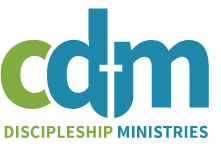![]() From time to time we try to keep you aware of some helpful commentaries. There are two that we would like to put before you that we find particularly useful. The first commentary mentioned, Genesis: A Commentary, is by a first-rate Old Testament scholar, Bruce K. Waltke.
From time to time we try to keep you aware of some helpful commentaries. There are two that we would like to put before you that we find particularly useful. The first commentary mentioned, Genesis: A Commentary, is by a first-rate Old Testament scholar, Bruce K. Waltke.
As I was reading a book that I will review in a later edition, How To Read Genesis, by Tremper Longman, I was reminded of the importance of the book of Genesis. Longman writes, “In Genesis we learn of God’s creation, human rebellion and God’s pursuit to redeem us. In Genesis we meet Adam and Eve, Noah, Abraham, Joseph and many other compelling persons. In Genesis we also get the first intimations of our Redeemer.” Those and other similar comments brought Waltke’s commentary on Genesis back to mind.
In Genesis we meet the creator God who is one and the same as the covenant making and keeping God. Two statements by Waltke reflect the importance of Genesis: A Commentary. First, “As God unfolds the drama of creation in successive days, building to a climax, so God develops the drama of history through successive epochs, which reach a dramatic climax when all volitional creatures bow to Christ.” Second, “The order of creation will undergird God’s later revelations regarding humanity’s social order. His law (the teachings of Scripture) is in harmony with the created order. Thus, to flout his revealed moral order is to contradict creation, his created reality.”
While I appreciate his exegesis of each passage of Genesis, I particularly find Waltke’s treatment of chapters 1 through 3 extremely useful and helpful. You will quickly see what I mean as you read his observations on the Genesis account of man’s creation in God’s image and likeness. He writes, “Understanding that we are made in the image of God is essential for understanding our destiny and relationship to God. Without revelation humans become confused and depreciate themselves.” He further writes, “The narrator (of Genesis) does not systematically present abstract truths about the divine; rather he tells us a story about the Creator and his creation.”
Being somewhat aware of Waltke’s pilgrimage in the Reformed faith, the passages dealing with Abraham and the development of the covenants is of particular interest and value. This commentary is a must for the pastor, teacher, scholar and student of the Bible. As the book of beginnings, we need to be thoroughly acquainted with it. It is the foundation of our entire world and life view and understanding of God’s creating and redeeming love. As you read the biblical book of Genesis and use a tool such as Waltke’s commentary, you will have a much greater appreciation for God’s covenant faithfulness, a better feel for God’s sovereignty and man’s responsibility, and God’s universal and mediatorial Kingdoms in which he blesses the nations. Waltke highlights the importance not only of having right relations with God, but also with one another. One of my favorite sections in Genesis covers the family of Joseph and how God worked to protect, provide for, and bring about reconciliation. Waltke refers to this section as the reconciliation of a dysfunctional family, and that it was, yet God’s purposes were uniquely served through this family.
This commentary should be in your library and at the top of the list for Genesis.
